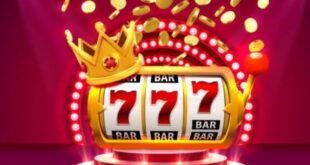If you are an investor looking for a comparison between Solana (SOL) and Cardano (ADA), you are making one of two basic choices: technology or returns. Regarding technology, both blockchains have the same goal of scaling and being more efficient than existing technologies like Ethereum, but their approaches and success vastly differ.
Understanding Solana
Solana has built a name for itself based on amazing velocity, very low transaction costs via the implementation of Proof of History (PoH) and Proof of Stake (PoS). Because of the combination of Proof of History and Proof of Stake, the Solana network can reach capacity while consuming thousands of transactions while consuming minutes. With this incredible speed, Solana quickly became one of the leaders in DeFi, NFTs, and gaming platforms.
From an investment point of view, Solana has had high levels of volatility but high potential upside, up to this point in our timeline. Solana has been rising so fast during bullish runs that investors have taken huge profits in a very short period of time. For these reasons, the Solana Price is always worth watching and following to determine a reasonable entry and exit level.
Understanding Cardano
Cardano is rather slow in terms of its development in relation to Ethereum; for example, it is slow in terms of development, and that sustainable type of development may also not be seen. Meanwhile, Cardano has a low-consumption protocol, algorithm, or consensus mechanism called Ouroboros, and has taken a research-driven approach to the sustainability of the multi-layered model they have, with meaningful research that should be emphasized. Cardano emerges as a sustainable option for investors uninterested in expedient short-term returns, ultimately be adopted by governments and institutional organizations across various verticals, including education, health, identity management, etc.
Comparing Returns
- Solana offers higher upside during bull markets since its dApp ecosystem is strong. Additionally, transaction speed is very high; however, there are also higher risks associated with Solana, which may result from its reliance on network outages and rapid adoption.
- Cardano has more stability and gradual growth in prices based on its board of academic peer-reviewed development, and it may not have such enormous spikes as Solana has had, but it is a much safer bet for patient investors.
Key Differences Between Solana and Cardano
- Speed: Solana can manage thousands of TPS, while Cardano is processing fewer TPS but considers scalability for the long run.
- Ecosystem: Solana sees higher activity in DeFi & NFTs while Cardano is pursuing government projects, healthcare, and education.
- Reliability: Cardano reinforces trust with security and peer-reviewed updates, while Solana has suffered outages but continues to improve rapidly.
Market Performance and Price Trends
Both Solana and Cardano are in the upper echelon of cryptocurrencies according to market cap, but their price histories have taken different paths:
- Solana Price has historically moved in wild price swings, with massive increases during NFT booms and sharp declines when there were outages in the network. Traders have tended to view it as a high-risk/high-reward asset.
- Cardano’s Price, on the other hand, has been much steadier and moves lower, yet steadily executes its roadmap. It might not net huge short-term profits, but it attracts longer-term investors who bet on strictly academic rigor and broad global adoption.
From an investing standpoint, tracking Solana Price can give interesting indications as it often provides sentiment indicators for fast-moving sectors in blockchains generally and NFTs and DeFi specifically.
Strengths and Weaknesses
Strengths of Solana
- Very high transaction speed, capable of thousands of transactions per second.
- Very low fees, suitable for microtransactions and NFTs.
- Fast-growing ecosystem with solid developer usage and interest.
- Weaknesses: History of outages, has concerns over centralization due to a limited number of validator nodes.
Strengths of Cardano
- Strong academic basis with peer-reviewed protocols.
- Very few outages provide high reliability.
- A large and loyal global community that can look at the long-term.
- Weaknesses: Slower in terms of ecosystem growth and not as many DeFi/NFT projects as Solana.
Which Is Better for Investors?
You should go with Solana or Cardano, depending on your purpose for investing.
- Choose Solana if \ for priority is innovation, speed, and your desire to gain exposure to the DeFi and NFT markets. Solana is riskier, but could deliver higher returns in the short term.
- Choose Cardano \ if you would prefer a cautious, research-based approach. Cardano is more suitable for long-term investors who believe that blockchain adoption will happen due to careful execution and well-done partnerships with either governments or institutions.
You can even include both in a moderated portfolio that serves two niches of the crypto ecosystem.
Conclusion
The Solana vs Cardano debate reflects the variety of blockchain approaches that exist. Solana is the fast-moving innovator, creating a playground for developers and NFT enthusiasts, while Cardano is the thoughtful academic, laying down their vision of a long-term framework for global adoption.
Neither is “better”—which chain fits you best depends on whether you value speed and hype (Solana) or sustainability and stability (Cardano).
It is unlikely they will cancel each other out on their respective toes. In the evolving landscape of crypto, they will co-exist and serve different use cases and audiences. For us investors and developers, it will be important to track the Solana Price and to follow Cardano on their slow-but-steady march towards a great crypto future when our buying and selling crypto strategy gets serious in 2025 and beyond.
 Newspatrolling.com News cum Content Syndication Portal Online
Newspatrolling.com News cum Content Syndication Portal Online







